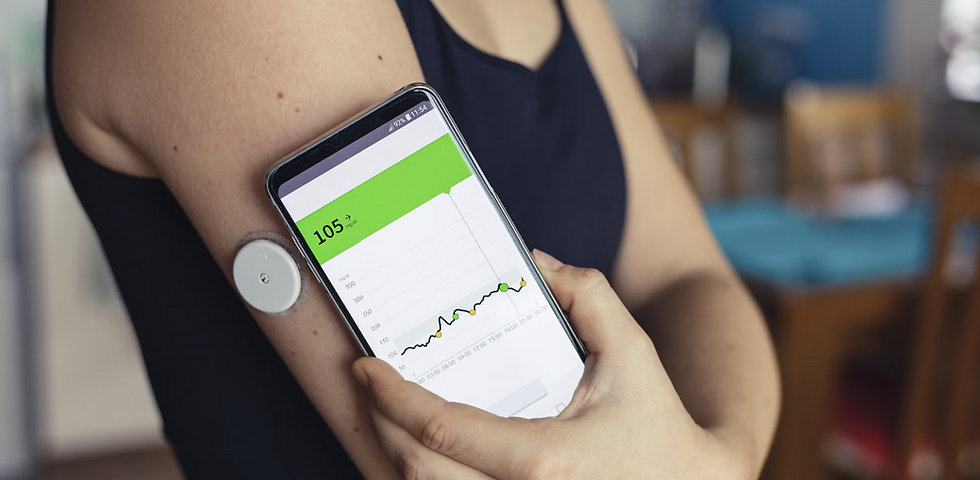Core Metabolic Blood Tests: Medical Overview and Interpretation Guide
- Elane Bosman

- Jul 24
- 3 min read

This guide outlines essential blood tests used to assess metabolic and glycemic health. It is intended for clinical interpretation and patient education. Medical decisions should always be made in consultation with a qualified healthcare provider.
1. Fasting Glucose
What It Measures:
The fasting glucose test evaluates the concentration of glucose (blood sugar) in the bloodstream after at least 8 hours of fasting, typically done in the morning.
Medical Significance:
Reflects immediate glucose regulation.
Elevated fasting glucose is a hallmark of insulin resistance and impaired beta-cell function.
Chronic elevations may precede diabetes by years, indicating pre-diabetic physiology.
Clinical Reference Ranges:
Optimal: 70–85 mg/dL
Acceptable: 85–99 mg/dL
Pre-Diabetes: 100–125 mg/dL
Diabetes: ≥126 mg/dL (confirmed on two separate occasions)
2. HbA1c (Hemoglobin A1c)
What It Measures:
HbA1c quantifies the percentage of hemoglobin molecules in red blood cells that have become glycated (bound to glucose), reflecting average blood glucose over 2–3 months.
Medical Significance:
Directly correlates with chronic glucose exposure and glycemic variability.
Higher HbA1c levels increase the risk of microvascular and macrovascular complications.
A valuable marker for assessing metabolic aging and long-term insulin resistance.
Clinical Reference Ranges (ADA Guidelines):
Optimal (Functional Range): 4.8–5.2%
Normal (Conventional Range): <5.7%
Pre-Diabetes: 5.7–6.4%
Diabetes: ≥6.5%
3. Fasting Insulin
What It Measures:
Fasting insulin reflects the amount of insulin secreted by the pancreas in a fasting state. It’s an early and sensitive marker of metabolic dysfunction, often altered before glucose levels rise.
Medical Significance:
High fasting insulin suggests compensatory hyperinsulinemia, often seen in insulin resistance, PCOS, obesity, and early type 2 diabetes.
A normal fasting glucose with high fasting insulin is a red flag for preclinical metabolic disease.
Clinical Reference Ranges:
Optimal: 2–6 μU/mL
Acceptable: <10 μU/mL
Elevated: >10 μU/mL → Suggestive of insulin resistance or prediabetes
Low: <2 μU/mL → May indicate beta-cell failure or type 1 diabetes
Note: Fasting insulin is often not included in standard panels but is a crucial tool for proactive metabolic care.
4. HOMA-IR (Homeostatic Model Assessment of Insulin Resistance)
What It Calculates:
HOMA-IR is a mathematical model used to estimate insulin resistance using fasting insulin and glucose values:
HOMA-IR = (Fasting Glucose x Fasting Insulin) ÷ 405(Glucose in mg/dL, Insulin in μU/mL)
Medical Significance:
Assesses the degree of insulin resistance—a root cause of obesity, type 2 diabetes, cardiovascular disease, and PCOS.
More sensitive than glucose alone in detecting early dysfunction.
Interpretation Ranges:
HOMA-IR Score | Interpretation |
≤1.0 | Optimal insulin sensitivity |
<2.0 | Good sensitivity |
2.0–2.9 | Early insulin resistance |
≥3.0 | Significant insulin resistance |
Example Calculation:
For a patient with:
Fasting glucose = 87 mg/dL
Fasting insulin = 6 μU/mL
HOMA-IR = (87 × 6) ÷ 405 = 1.29✅ Interpretation: Good insulin sensitivity
Clinical Summary Table
Test | Purpose | Optimal Range | Concern Threshold |
Fasting Glucose | Glucose regulation | 70–85 mg/dL | >100 mg/dL |
HbA1c | 3-month glucose avg | 4.8–5.2% | ≥5.7% |
Fasting Insulin | Insulin load | 2–6 μU/mL | >10 μU/mL |
HOMA-IR | Insulin resistance | ≤1.0 | ≥2.9 |
Understanding Your Blood Tests: What You Can Do as a Patient
Learning more about your blood tests helps you become an active partner in your health journey.
This is not about questioning your doctor — it’s about learning your body’s language. When you understand what your blood tests mean, you can have better conversations with your provider, make empowered choices, and create a plan that supports your long-term health.
You are your body’s best advocate — and every small insight brings you closer to balance, energy, and confidence.




Comments